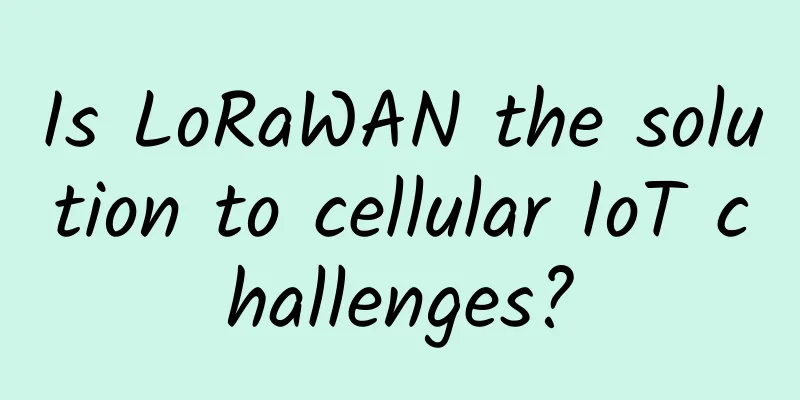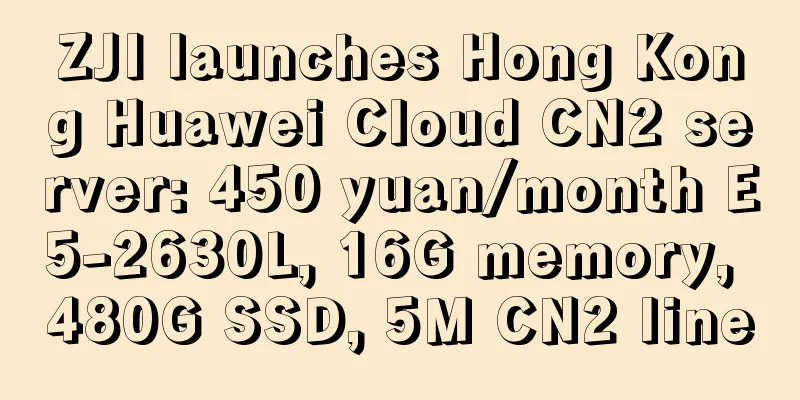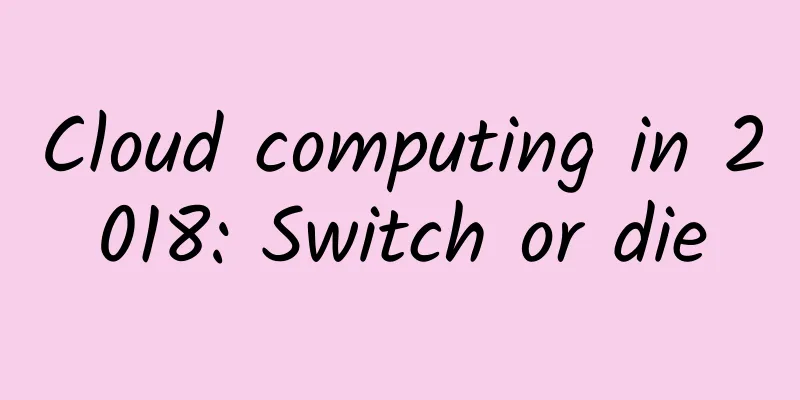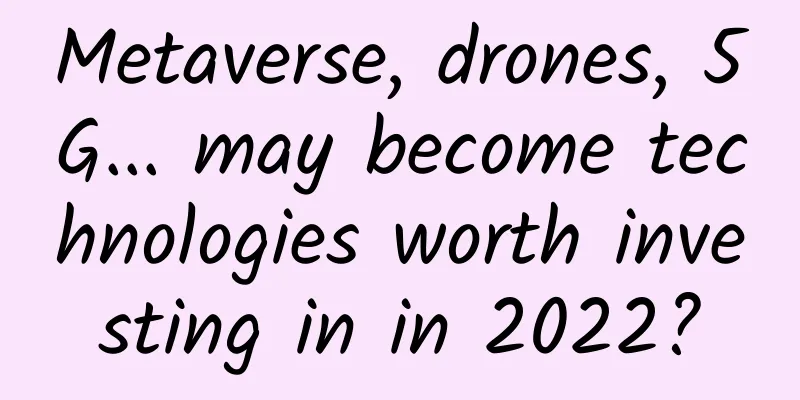Is LoRaWAN the solution to cellular IoT challenges?

|
Ten years ago, there were high hopes for cellular networks to drive the massive IoT. In fact, both Cisco and Ericsson predicted that the connected device market would reach 50 billion devices by 2020, according to a recent report from Enterprise IoT Insights. But the overall IoT market has grown more slowly than forecasts at the time, with only 12.4 billion IoT devices in circulation today, more than a year after those forecasts were finalized. However, LPWAN solutions such as LoRaWAN can easily adapt to IoT application needs and will have a greater impact on massive IoT. The Massive Internet of Things consists of a large number of low-complexity, low-cost devices connected to networks that support relatively low throughput speeds. This combination of sensor devices and networks built specifically for the Internet of Things is changing the way businesses operate, how public infrastructure is monitored, and how organizations implement sustainability initiatives. So it’s easy to see why 10 years ago there were so many high hopes for cellular networks. After all, cellular connections dominate for other types of devices. Carriers already have the infrastructure, so why couldn’t they easily use it to power the Massive Internet of Things? It seems like the Massive Internet of Things is only a few years away. And then a few more. Always on the horizon. Cellular IoT ChallengesIt turns out that the technology required for large-scale IoT deployments did not exist when those predictions were made. Among other challenges, there was a mismatch between infrastructure costs, device battery life requirements, and availability. Cellular operators attempted to connect the predicted billions of devices using technology that was not purpose-built for IoT. Of the IoT devices currently deployed, 2G and 3G represent the majority of cellular IoT connections, with 53.1% using one or the other. This is problematic as carriers are retiring these legacy technologies while their replacements continue to struggle to gain traction. This year, carriers like AT&T and T-Mobile are shutting down their 3G networks, leaving 2G networks behind in much of the world, with some parts of Europe set to follow. 47% of users were not notified of network shutdowns, creating an uncertain path forward. Cellular low-power wide-area network (LPWAN) technology has advanced in recent years as use case requirements have become clearer, but even in its most dominant regions, challenges remain. Take China, for example. It is the largest and fastest-growing market for NB-IoT and Cat-M1, with 100 million cellular LPWAN chipsets sold in the region in 2020, according to Sequans’ internal estimates. The rest of the world accounted for just 5 million NB-IoT chipsets, according to estimates. In China, data plans and investments in infrastructure have enabled the technology to become ubiquitous, but even there, hardware vendors are struggling to turn a profit. Let’s look at three cellular IoT challenges and how LoRaWAN can provide solutions. 1. Expensive connectionsInfrastructure costs, in particular, have been one of the biggest barriers to large-scale IoT deployments using cellular networks. Cellular requires expensive infrastructure to support it, including towers that cost more than $100,000 to build, expensive gateways, and a large labor footprint for network deployment and ongoing management. Due to the inherent deployment model of cellular networks, operators cannot build networks on demand, unlike unlicensed LPWAN solutions such as LoRaWAN, which can be easily adapted to IoT application needs. LoRaWAN hardware also has a lower bill of materials (BOM) cost, which reduces overall infrastructure and solution costs compared to cellular-based solutions. This doesn’t even take into account functional differences in key areas, such as end-device power consumption and its associated costs in large-scale deployments. The communication profiles of NB-IoT’s most common use cases, such as asset tracking, smart metering, and wearables, result in high power consumption in cellular devices. Supporting more power-hungry devices inevitably leads to battery drain, which is exacerbated by the inherently “chatty” nature of NB-IoT. Once devices are deployed, firmware updates for cellular devices typically consume more battery life than LoRaWAN devices, making LoRaWAN a more viable solution for projects that need to last longer in the field. According to Semtech, LoRaWAN’s overall operating power consumption is three to five times lower than NB-IoT. Battery life is also not as good with NB-IoT, as ABI Research found that LoRaWAN devices have an average battery life of more than five years, providing longer lifespans, depending on the use case. A team of researchers from the University of Bologna, the University of Trento, and the Integrated Systems Laboratory found that LoRaWAN battery life can be 10 times longer than NB-IoT in certain applications, based on their experimental data using sensors developed to monitor structural integrity. 2. Spotty coverage and fewer optionsCellular IoT solutions have yet to be deployed at scale due to delayed rollouts of NB-IoT and CAT-M1 deployments. However, LoRaWAN is growing rapidly due to flexibility in deployment models and growing interoperability between network operators, which will combine to provide global coverage in the near future. According to the LoRa Alliance, there are now more than 160 countries with public LoRaWAN networks, and according to GSA, 64 countries have NB-IoT or LTE-M operators. Lack of networks and interoperability issues make it more difficult to manage deployments across locations using cellular IoT technology. On the other hand, LoRaWAN networks are experiencing significant growth. With integration between various terrestrial networks and satellite connections, as well as advancements such as the LoRa Alliance's LR-FHSS transmission data rate, collaborations such as the Multimode IoT Infrastructure Consortium (MMIIC) are paving the way for 100% global coverage by 2022. Additionally, certified cellular end-devices have been slow to come to market and have been negatively impacted by the 2G and 3G phase-outs mentioned earlier. In contrast, the LoRa Alliance provides a robust device certification program that gives end users confidence that sensor-enabled end-devices comply with the LoRaWAN specification. End-device compliance ensures correct behavior on the network, reduces support costs and prevents products from failing later when they are more expensive to fix. This type of policy and regulation will go a long way toward ensuring the reliability of end-devices that are expected to last in the field for decades. Some operators have even given up on NB-IoT, like NTT DoCoMo and Dish Network did last year, shifting their focus to Cat M1, LTE-M, and 5G, respectively. There is a lot of confusion about which cellular technology will win, and it’s anyone’s guess — even among mobile network operators. 3. 5G is not the solutionNB-IoT and Cat M1 are both 5G-compatible 4G technologies, so they are taking advantage of the 5G hype. As the sunset of 2G and 3G approaches, 5G is positioning itself as the solution that will fill the gap when more than half of current cellular IoT connections no longer work. However, enterprise adoption has been minimal to date, with only 290 publicly disclosed private 5G networks deployed worldwide, and spectrum applications for 5G have clearly declined. While 5G-enabled NB-IoT and Cat M1 offer cellular solutions for large-scale IoT deployments, they are still a long way from filling the gap. In the long run, several IoT technologies will coexist to maximize the ROI of IoT deployments. Cellular technologies will support use cases that require constant communication, higher data rates, or lower latency, while LoRaWAN will serve as the primary technology for use cases that require long range, deep indoor penetration, battery-powered devices, coverage in challenging environments, and implementations that require a mix of public and private networks. Connecting unconnected devices with LoRaWANLoRaWAN is poised to deliver the cost structure and flexibility needed for large-scale IoT deployments. It offers longer range, longer battery life, better propagation characteristics, and more power-efficient maintenance, which combine to effectively support more use cases. These are the reasons why ABI Research expects LoRaWAN to account for more than half of all non-cellular LPWAN connections by 2026. The range of LoRaWAN is particularly important as it has the potential to reach environments where cellular signals have difficulty penetrating or where cellular infrastructure is lacking. From rural and rugged environments to indoors and even deep inside solid structures, everywhere benefits from the propagation characteristics of LoRaWAN. Security is another key differentiator, as cellular signals can potentially be intercepted as they hop from one point on the network to another. LoRaWAN offers end-to-end security built into the protocol. LoRaWAN also supports public, private, and hybrid models, providing tremendous flexibility in how enterprises deploy network infrastructure. The LoRa Alliance's 500+ members work closely together to advance an open, global protocol that is designed to support more than 20 years of use in the field, compared to 3GPP's five-year cycle of introducing new protocols and deprecating old ones. The International Telecommunication Union (ITU) recently approved LoRaWAN as the global standard for LPWAN, further solidifying LoRaWAN's position as a reliable, open standard. End GameFirst movers are paving the way for IoT Analytics’ latest forecast of 1 billion LoRaWAN devices by 2025. They are supported by innovative deployment models and partnerships that the cellular market still lacks. With LoRaWAN being used to sense the physical world using sensors that can last for more than a decade and be updated over the air when needed, customers are free to explore limitless use cases and begin to benefit from the insights their data can generate. The potential of massive IoT is finally being unleashed. |
<<: Can't catch the three-way handshake process? Then come and catch a packet with me!
>>: China's 5G users account for more than 70% of the world's total
Recommend
What can digital twins bring to wireless communications?
Twins, that is, identical twins. Since two people...
Do you understand these IPv6 issues?
[[348221]] 1. We are currently using IPv4 network...
Will 5G mobile phones and package fees become cheaper and cheaper?
[[350564]] 1China has the largest 5G user group i...
Friendhosting adds new VPS with large hard disk, 45% off for half a year, starting from 7.6 euros
Friendhosting sent an email titled "Storage ...
How many IP addresses are there in China?
The topic we are going to talk about today is abo...
Sharktech: 1Gbps unlimited traffic high-defense server starting at $49/month, 10Gbps unlimited traffic high-end server starting at $259/month
If you need a high-defense server or an unlimited...
What systems does weak current system integration mainly include?
1. Computer Network System Engineering In intelli...
ABI Research: 5G slicing will generate $20 billion in revenue
5G slicing is a key enabler of new business model...
China Mobile: More than 390,000 5G base stations will be opened throughout the year to ensure that the quality of 4G network will not decline
Despite the sudden outbreak, this did not stop Ch...
Laying the foundation for digital finance | H3C launches S12500G-EF, a new generation of green smart switches
On April 25, New H3C Group, a subsidiary of Tsing...
After unplugging the network cable, does the original TCP connection still exist?
Hello everyone, I am Xiaolin. Today, let’s talk a...
What is 6G and the future of wireless?
While 5G is still being rolled out to replace the...
What are the excellent designs worth learning in NS?
I used to be a student, and now when I think back...
CloudCone 5th Anniversary: $14/year KVM-dual core, 1G memory, 41G hard disk, 5TB/1Gbps, Los Angeles data center
CloudCone has been established for 5 years. The c...
5G core network revenue expected to reach $1 billion by 2020
5G core network revenue will reach $1 billion in ...









